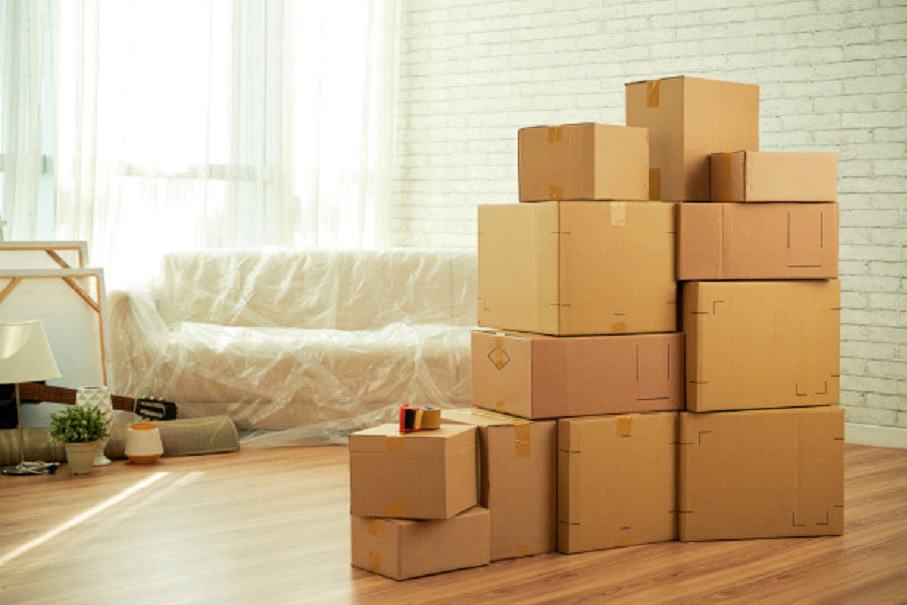
Ensure a Smooth Move with Tips from a Professional Organizer
The most important thing you must do before you move is to declutter. We all know this, but often, we don’t give ourselves enough time for this process. The following tips can ensure an efficient purging, organizing and packing process:
Assess Your New Home’s Space
Decluttering is an important process prior to moving. First, you need to accurately determine the space constraints of your new home. Only then will you understand how much to keep or discard before loading up the moving van.
For example, if you move from a 3,000 square foot home to a 1,500 square foot one, you’ll need to part with half of your belongings to fit everything. When you already have excess, you’ll need to let go of even more stuff before moving.
Give Yourself the Gift of Time
Allow for enough time to declutter. In most circumstances, people will have advanced notice before they move. It’s never too early to start this organizing and purging process. Most people underestimate how much they own. However, once they start packing, it’s eye-opening. Don’t wait until the big packing day to start getting rid of stuff.
Chances are you’ll make shortsighted decisions and get rid of things you should keep, potentially packing useless items instead. When you simultaneously pack and declutter, you’re mixing two highly stressful projects together. There’s usually enough chaos going on around that you cannot possibly think straight. A calm, focused environment is optimal when you’re trying to decide what to part with or keep.
It may seem excessive, but you should give yourself a year to thoroughly declutter. You have paperwork, photographs, art, cookware, linens, furniture, etc., to rummage through. All these inventories need special attention.
Additionally, a year’s lead time will allow you to sell belongings at optimal times. You can sell your lawnmower in the spring when you’ll have more buyers. Sort and organize items by season to best determine whether you’ll want to keep them. Lastly, when you give yourself the necessary time to declutter, you can place things aside to sell online or at a garage or yard sale.

Determine Your Recipients and How You’ll Donate or Dispose of Items
Reserve time to pass along promised items such as a sofa that won’t fit in your new home. Grown children are notorious for not taking their childhood keepsakes after they’ve acquired their own homes. It’s essential to remove such items from your home to minimize how much you need to pack and move.
Determining who receives what and ensuring the “safe passage” of those belongings deserves extra time. Research the appropriate charities, including those that serve particular causes, and make pick-up arrangements.
The donation or disposal of pesticides, aerosol cans, fireworks, tires, motor oil, old paint, batteries, and all electronics will require additional attention and planning. Check with your town or county, since many have specific rules regarding these items.
Think Twice About A Storage Unit
Try to avoid the temptation to use a storage locker, which can be costly. Often, people utilize one to declutter a space quickly before they list their home for sale.
Frequently, items that create indecision get tossed into storage lockers where they enter and never leave. It’s financially wiser to sell or get rid of items you can part with confidently. Be selective about what to keep.
Look at Your Possessions Objectively
A good strategy to help you decide what to remove is to take pictures of all your rooms. Study the images with an objective eye. Items that jump out at you right away are either things you love or hate.
Clutter always stands out. Crowded countertops, overflowing bookcases, and over-stuffed closets are more obvious and good starting points. Tackle them first, especially before you list your home for sale.

Purge and Organize One Room at a Time
Declutter room-by-room. Purging and organizing will seem less daunting.
Place a basket by the door for things that belong in other rooms. At the end of an organizing session, put the articles back where they belong.
Create Item Categories and Color-Coded Labels
It’s best to sort everything into like groups when organizing. Further break down piles into subcategories. For instance, a pile of pants can be subdivided into types such as jeans, dress, leggings, or work. Another subcategory can be according to color.
When you create categories, it’s easier to declutter because you’ll more readily identify your actual inventories. Have boxes and bags for articles to donate, sell, recycle, trash, and pack.
It’s always a good idea to get a jump on packing even before you list your home for sale. The majority of the boxes you use for packing should be medium-sized. They’ll be easier to move around. Don’t forget bubble wrap and packing tape to secure fragile items.
Good pre-pack items include excess linens, off-season clothing, books, china, glassware, specialty cookware, photo albums, and off-season sports equipment. Color-coded labels make it easier to designate locations. You can also use white labels and colored markers to ensure that movers deliver boxes to the proper rooms.
Conclusion
Creating a good decluttering strategy will ensure an efficient process and a smoother move. There are many home organizing books and blog posts detailing the most effective methods for accomplishing these tasks.
Thoroughly reducing your home’s clutter well in advance of a potential move yields several benefits. It significantly reduces the stress involved with haphazardly getting rid of things while you pack. You’ll also minimize the time and hassle of figuring out how to get rid of your items. Selling no longer needed or wanted items will put extra money in your pocket too. Lastly, your home will show better when you’re ready to list it for sale.
